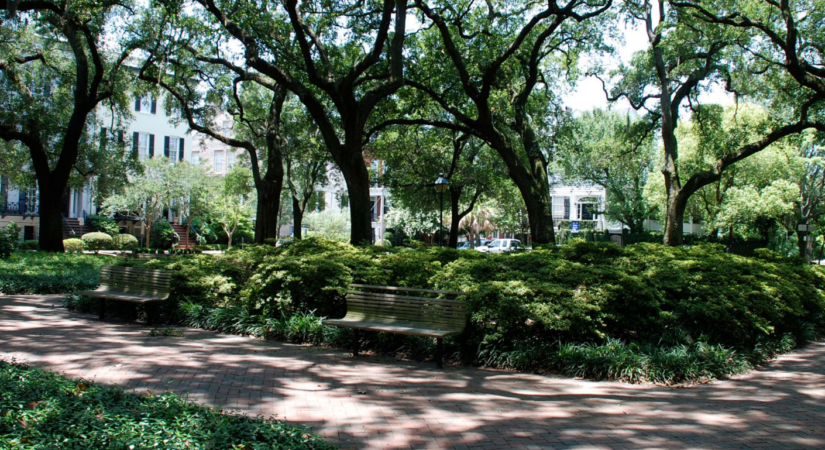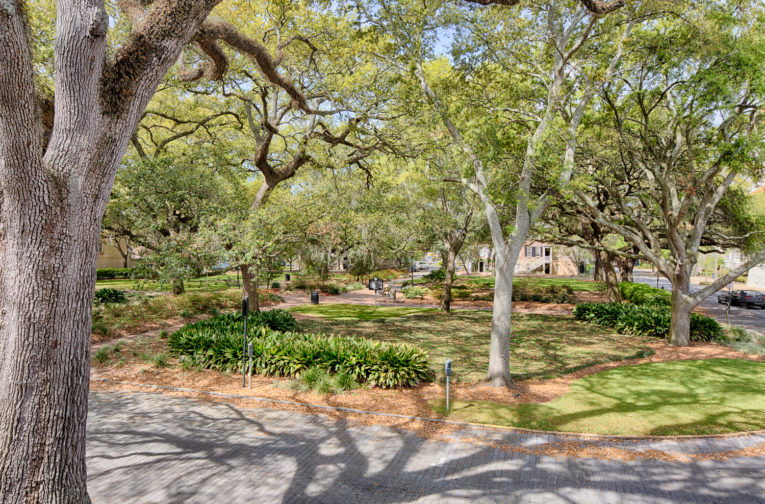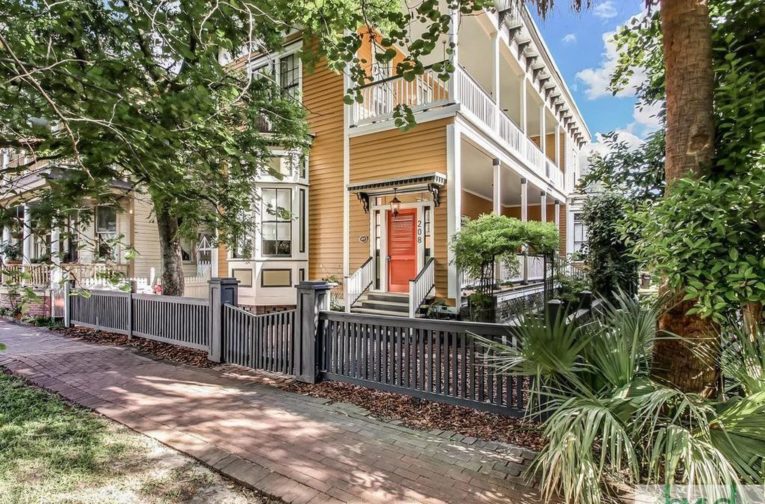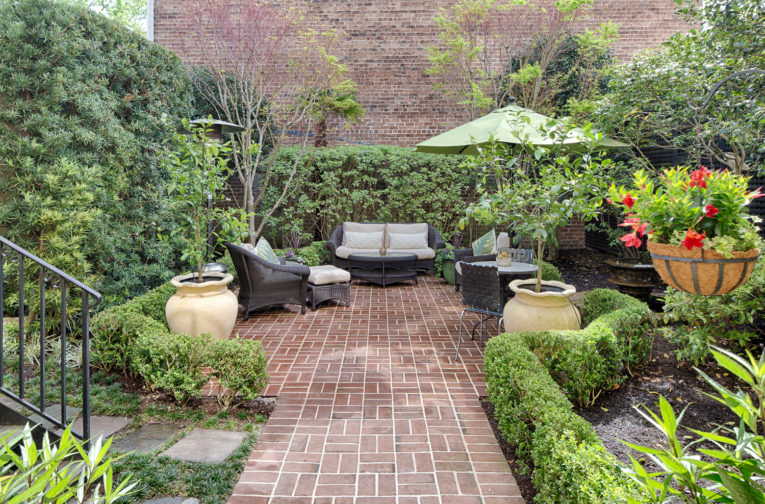Pulaski Square may not be one of Savannah’s better-known squares, but its tranquil neighborhood feeling makes it one of the most livable downtown experiences for today’s homebuyer.
Originally laid out in 1837, the square was named for Revolutionary War hero Casimir Pulaski, who died leading his troops in the Siege of Savannah in 1779. Interestingly, the monument to Pulaski isn’t located in the square that’s named for him, but in Monterey Square to the south.
AN OASIS OF GREEN
Pulaski Square is somewhat unique in that it is one of only a few downtown squares without a central monument. Instead, the square is anchored by numerous mature live oak trees. Many observers feel that this natural beauty, central location and serene atmosphere more than makes up for the square’s lack of statuary.
Pulaski Square is also located within easy walking distance of the Savannah Civic Center as well as numerous destinations in the downtown area. A block south of the square is iconic Jones Street, which stands apart as the quintessential downtown Savannah residential avenue, with its wide, cobblestone streets and lush treescape. Lunchtime on Jones Street means the usual line of eager patrons forming to enjoy communal dining at the legendary Mrs. Wilkes Dining Room, but it’s also home to numerous shops, boutiques and inns. A short stroll south to Whitaker Street brings you to the vibrant Downtown Design District, featuring some of Savannah’s most fashion-forward clothing, arts and crafts and home goods stores.
One block to the east is the Green-Meldrim House, the parish house of St. John’s Church. The Gothic revival treasure is better known as Gen. Sherman’s headquarters during his occupation of Savannah at the conclusion of his “March to the Sea” during the Civil War. The extraordinary walkability and lack of heavy traffic in the area around Pulaski Square is one reason it’s considered one of Savannah’s true “neighborhood squares.”
SNAPSHOT OF SAVANNAH HISTORY
In local preservation circles, Pulaski Square is known as the first residential area restored by Historic Savannah Foundation (HSF), and one of that organization’s most ambitious efforts. In 1960, HSF purchased the historic 1839 Francis Bartow House on Harris Street and sold it to an owner interested in restoring it. Historic Savannah Foundation’s Pulaski Square-West Jones Street project began in 1965, a year before Savannah’s Historic District was awarded its official National Landmark status.
Approximately a dozen contributing historic structures overlook the square, including many fine examples of Greek Revival, Italianate, and “Savannah-style” row houses. The majority of Pulaski Square’s buildings were built in the 1800s, with the earliest existing construction dating back to 1838. New construction on the square is represented by a home that is soon to be under construction at 336 Barnard Street, built in the elegant style of the square’s historic properties.
Recent buzz on Pulaski Square centers on the recent unveiling of the Lofts on Pulaski, a 22-unit workforce housing renovation led by the Savannah College of Art and Design. Set inside the 1914 former Jewish Educational Alliance building on the southeast corner of the square — what would later become SCAD women’s dorms — this new affordable housing concept from the college will feature studio, loft, and two-bedroom apartments, and is sure to increase the vibrancy and livability of the area.
Pulaski Square is just one of the verdant jewels that comprise Savannah’s legendary urban plan, which was developed by city founder James Edward Oglethorpe before he founded Georgia’s first city in 1733. Today, Savannah’s city plan is revered by architects, historians and urban planners for its innovative, pedestrian-friendly design.
If you’re thinking about living in Savannah’s National Historic Landmark District, be sure to consult a real estate professional with experience selling historic property in order to navigate the available options. Inventory may be tight in the market right now, but a selection of homes are still available in the Landmark District for interested buyers.






